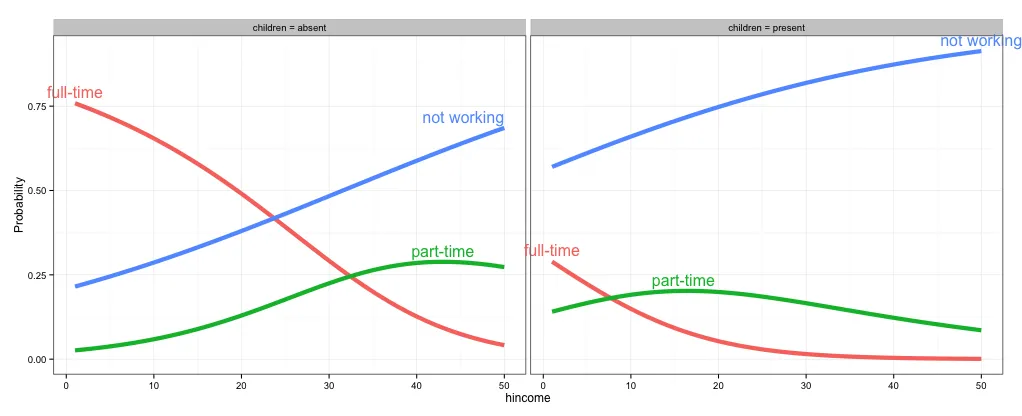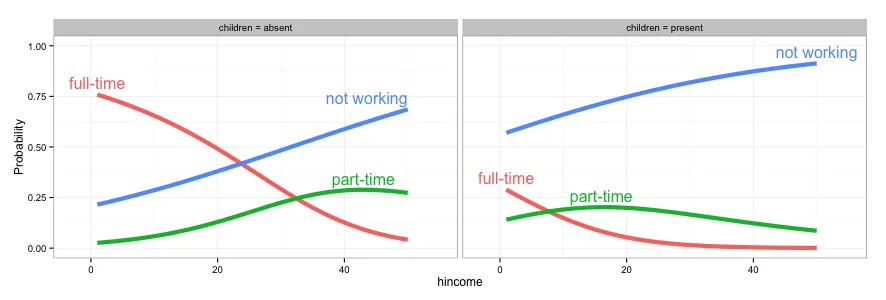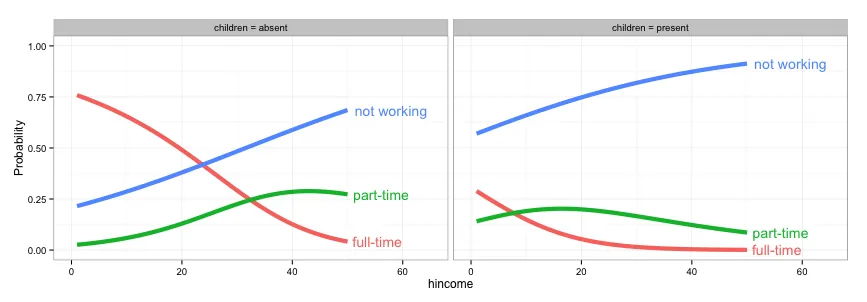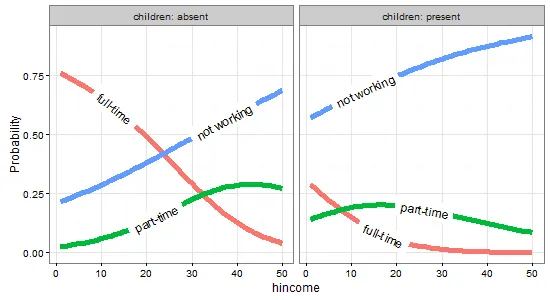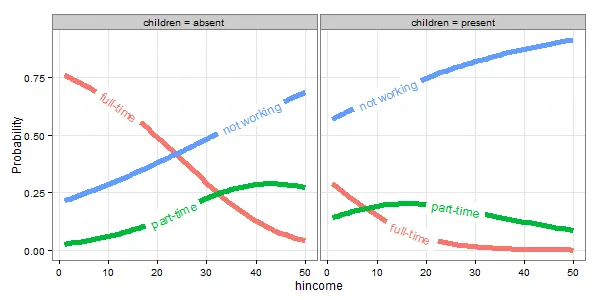在下面的图中,直接标签位置在垂直方向上进行了微调,但它们在左/右边缘被剪裁。有没有办法避免剪裁(类似于
以下是此示例的代码:
xpd=TRUE)或者将被剪裁的标签向内调整到图框内部?以下是此示例的代码:
library(car)
library(reshape2)
library(ggplot2)
library(directlabels)
library(nnet)
## Sec. 8.2 (Nested Dichotomies)
# transform data
Womenlf <- within(Womenlf,{
working <- recode(partic, " 'not.work' = 'no'; else = 'yes' ")
fulltime <- recode(partic,
" 'fulltime' = 'yes'; 'parttime' = 'no'; 'not.work' = NA")})
mod.working <- glm(working ~ hincome + children, family = binomial,
data = Womenlf)
mod.fulltime <- glm(fulltime ~ hincome + children, family = binomial,
data = Womenlf)
predictors <- expand.grid(hincome = 1:50,
children = c("absent", "present"))
fit <- data.frame(predictors,
p.working = predict(mod.working, predictors, type = "response"),
p.fulltime = predict(mod.fulltime, predictors, type = "response"),
l.working = predict(mod.working, predictors, type = "link"),
l.fulltime = predict(mod.fulltime, predictors, type = "link")
)
fit <- within(fit, {
`full-time` <- p.working * p.fulltime
`part-time` <- p.working * (1 - p.fulltime)
`not working` <- 1 - p.working
})
# Figure 8.10
fit2 = melt(fit,
measure.vars = c("full-time","part-time","not working"),
variable.name = "Participation",
value.name = "Probability")
gg <- ggplot(fit2,
aes(x = hincome, y = Probability, colour = Participation)) +
facet_grid(~ children, labeller = function(x, y) sprintf("%s = %s", x, y)) +
geom_line(size = 2) + theme_bw()
direct.label(gg, list("top.bumptwice", dl.trans(y = y + 0.2)))
